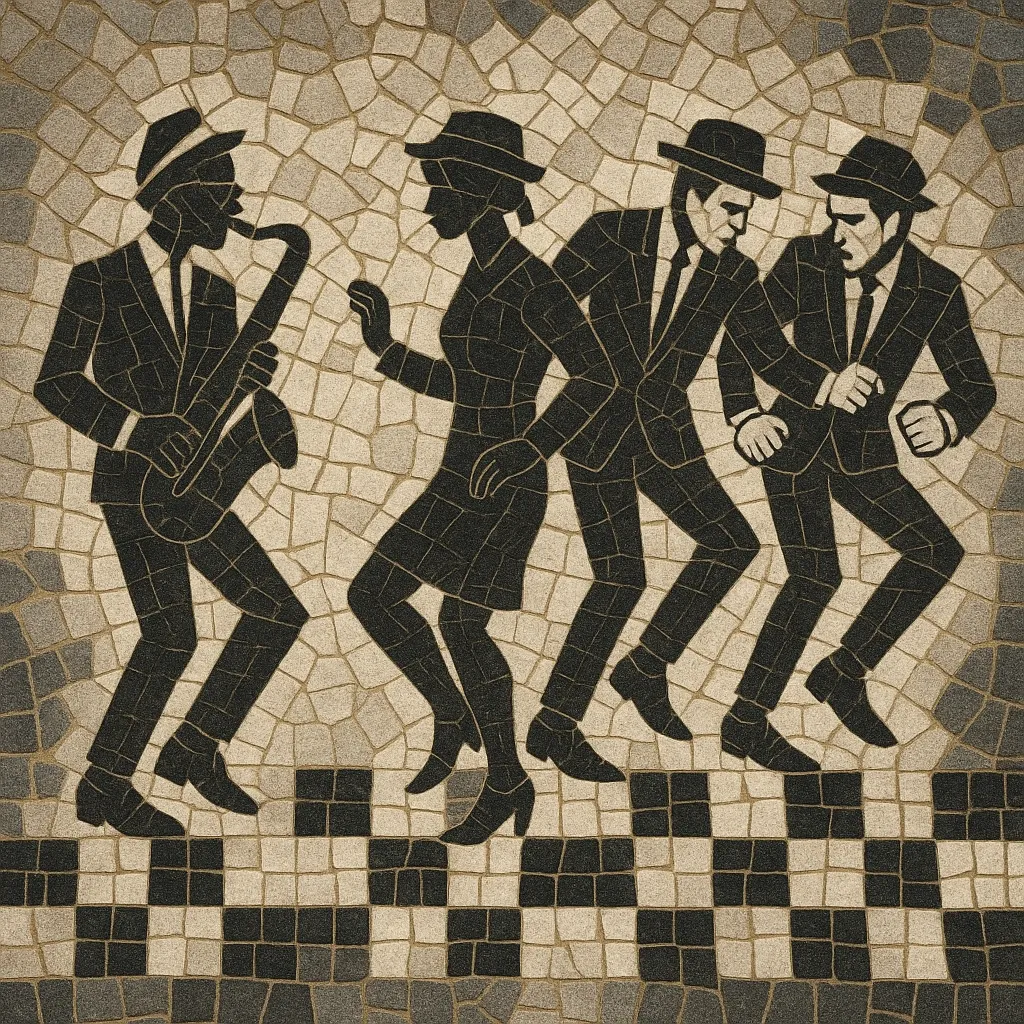2 Tone (often styled Two Tone) is a late-1970s British fusion of first-wave Jamaican ska and rocksteady with the urgency of punk rock and the pop sensibility of new wave. It is fast, tightly arranged, and danceable, featuring off‑beat guitar "skank" upstrokes, melodic basslines, crisp backbeat drumming, stabbing horn riffs, and bright organ/keyboard textures.
The genre is notable for its anti-racist stance and multiracial line-ups, with lyrics addressing social issues such as unemployment, urban decay, violence, and youth alienation in late-1970s/early-1980s Britain. Its visual identity—black-and-white checkerboard patterns, sharp suits, pork pie hats, and the iconic Walt Jabsco logo—symbolized racial unity and became a hallmark of the movement.
Musically, 2 Tone keeps the rhythmic buoyancy of ska while tightening song structures and lifting tempos, often using minor keys and brisk grooves that balance exuberant energy with a tense, street‑level edge.
2 Tone emerged in Coventry and the English Midlands in the late 1970s. Inspired by Jamaican ska and rocksteady brought to the UK by Caribbean immigrants, musicians blended these rhythms with the raw drive of punk and the hooks of new wave. Jerry Dammers of The Specials founded 2 Tone Records in 1979, creating both a sound and a cultural banner that explicitly championed racial unity.
The Specials’ single “Gangsters” (1979) jump‑started the movement, quickly followed by The Selecter’s “On My Radio,” Madness’s “The Prince” (released on the 2 Tone label), and The Beat’s early hits. The Bodysnatchers, The Swinging Cats, and Rico Rodriguez were also central figures. High‑energy performances, multiracial bands, and the distinctive black‑and‑white visual motif made 2 Tone a cultural phenomenon, aligning with Rock Against Racism and standing against the far-right.
In 1981, The Specials’ “Ghost Town” topped the UK charts, capturing the atmosphere of economic decline and social unrest. It became the movement’s defining anthem, reflecting the tension behind the otherwise festive dance rhythms.
By the early 1980s, key bands evolved or splintered—The Special AKA and Fun Boy Three developed out of The Specials, while Madness and The Beat moved further into pop and global touring. The core 2 Tone wave ebbed, but its musical blueprint and anti-racist ethos profoundly shaped later ska revivals.
2 Tone directly seeded the 1990s third wave ska scenes in the UK, US, and beyond, influencing ska punk and skacore with its faster tempos, punchy horns, and sing‑along choruses. Periodic reunions and new recordings by foundational artists have kept the sound and message alive, ensuring 2 Tone’s lasting cultural and musical impact.


